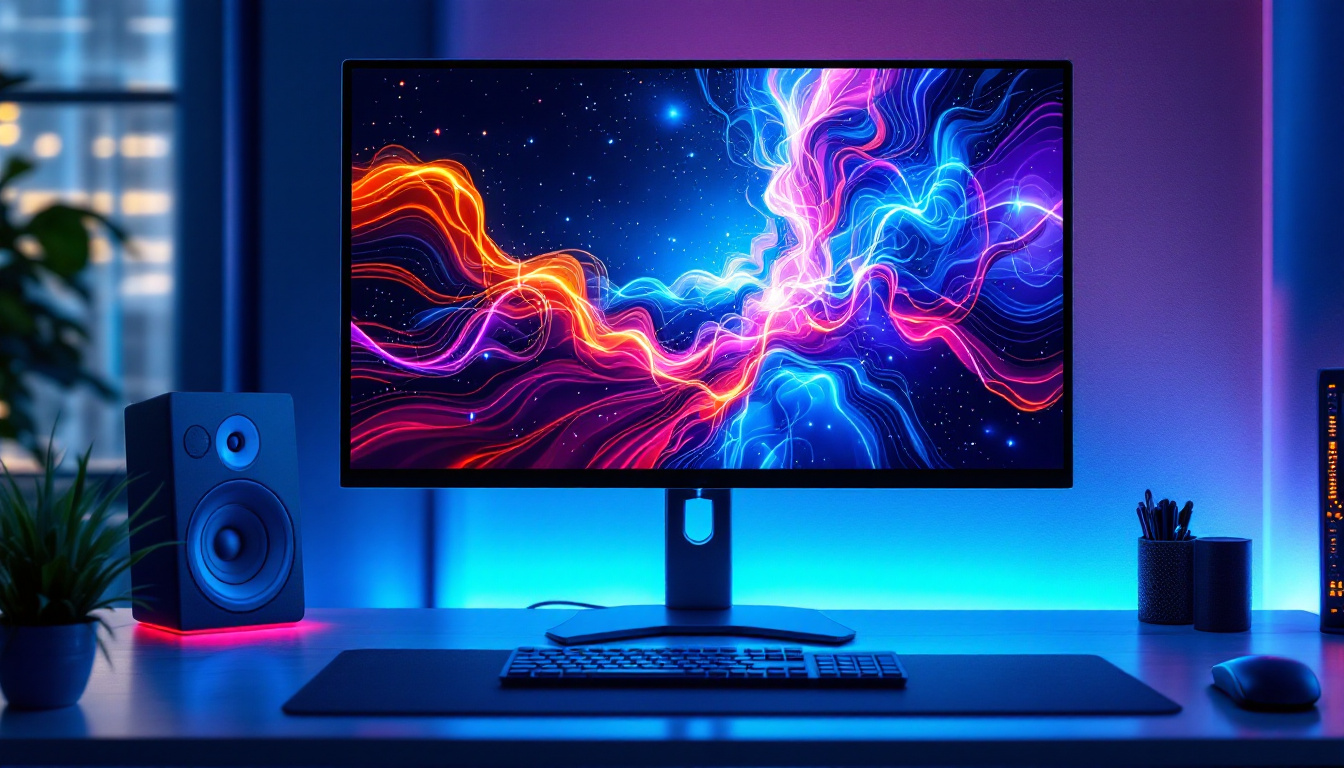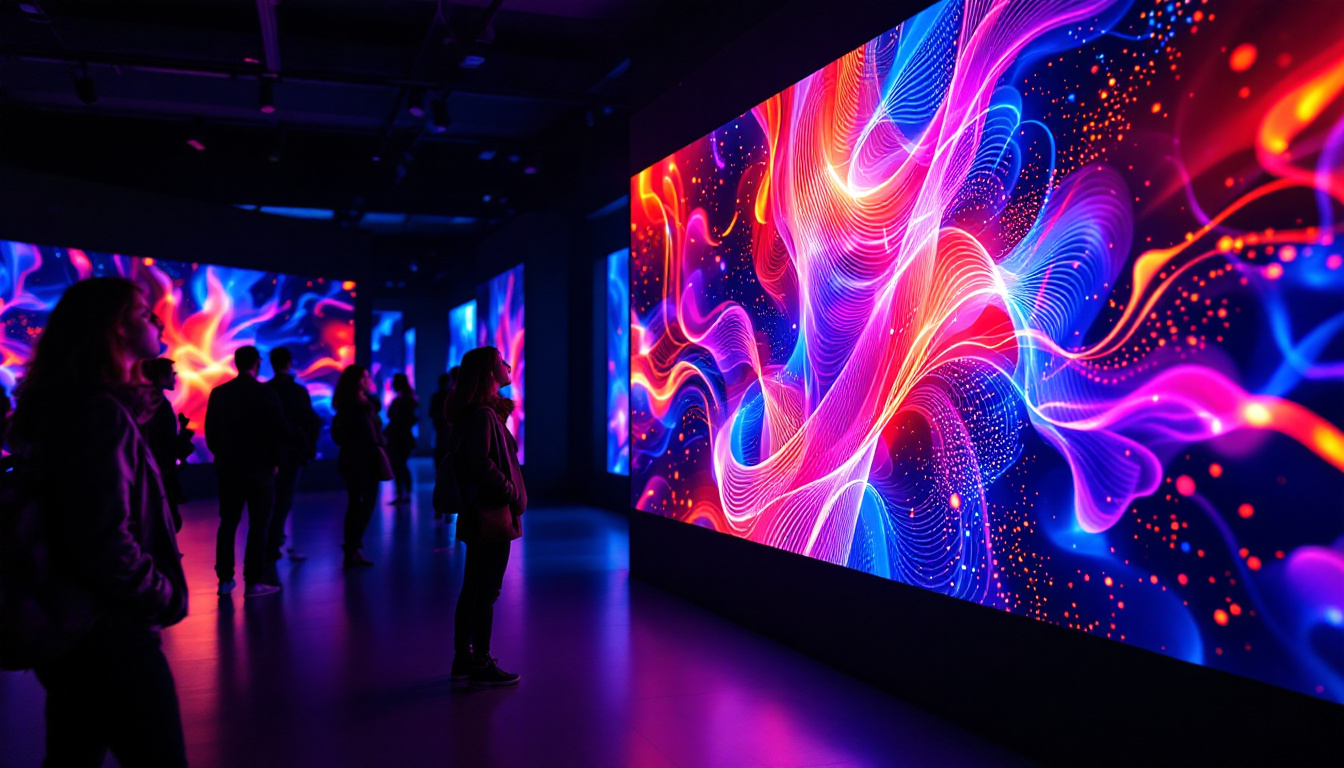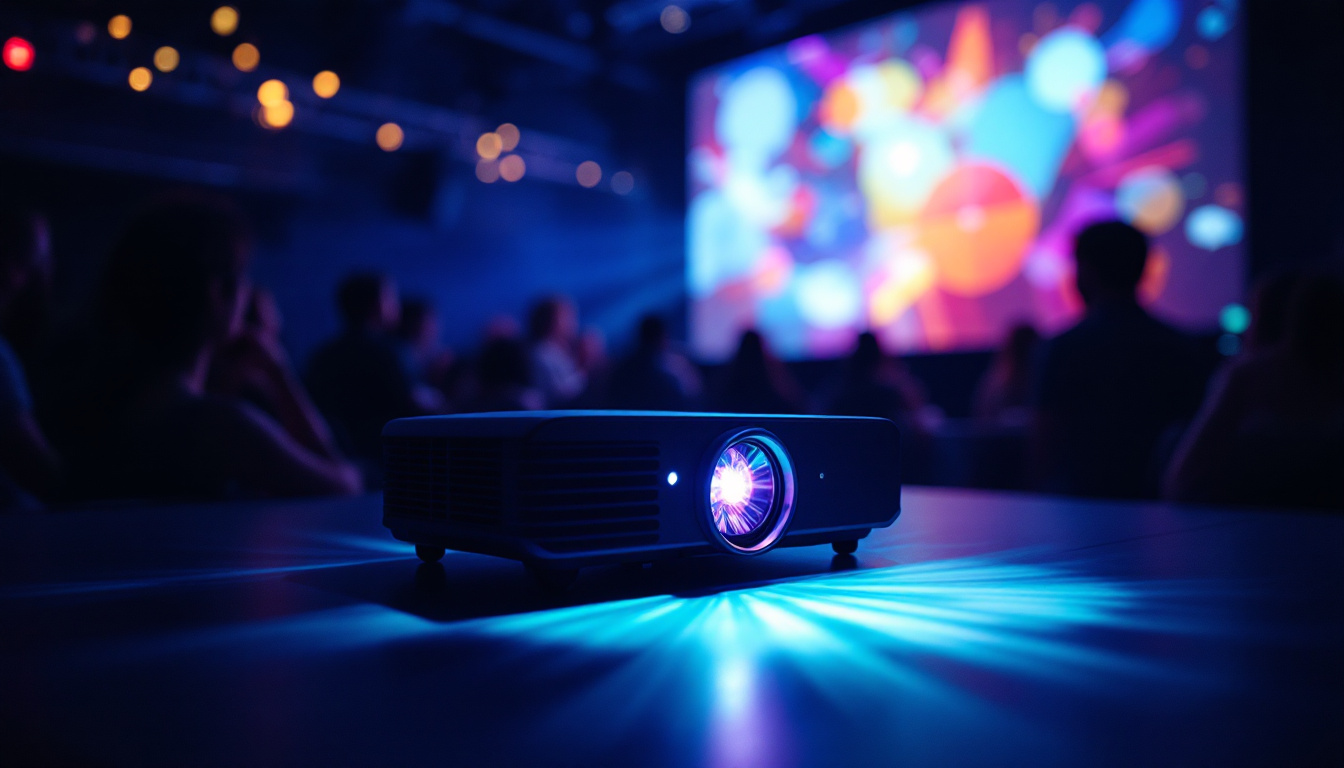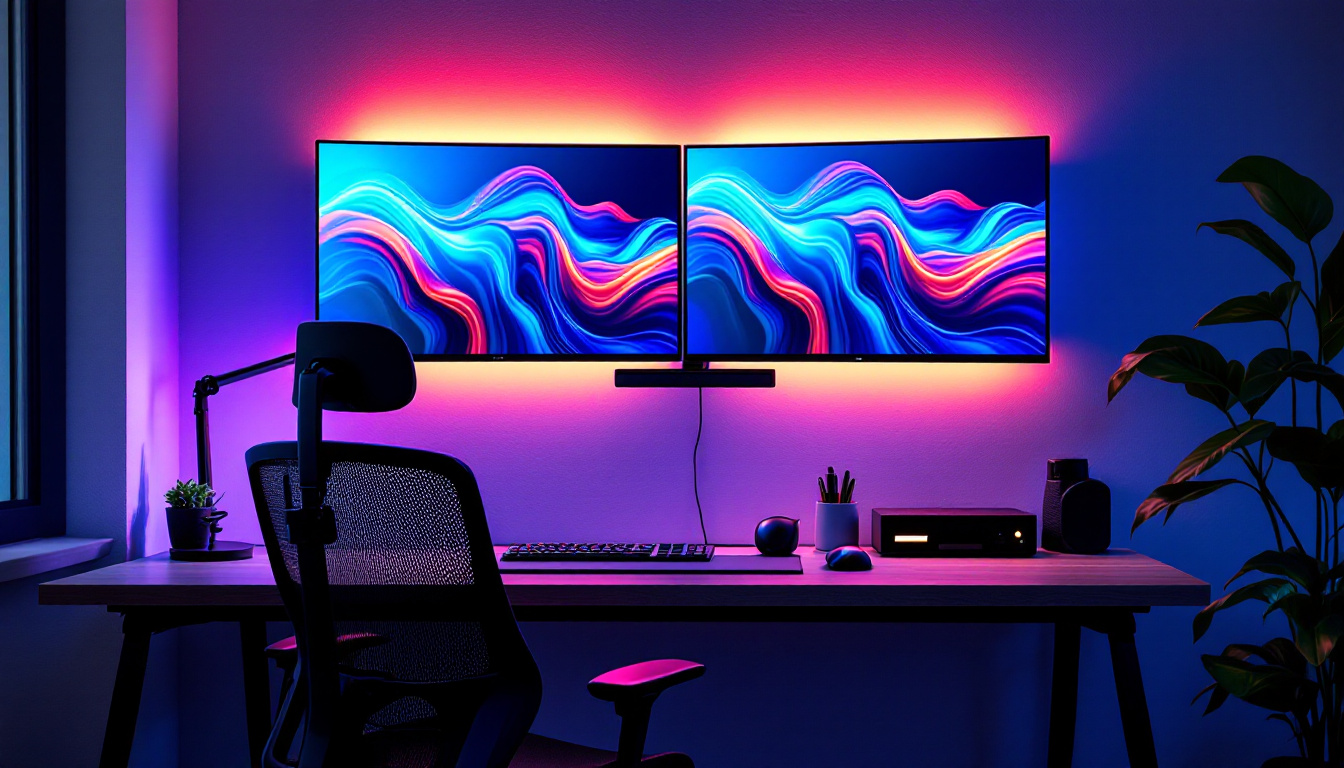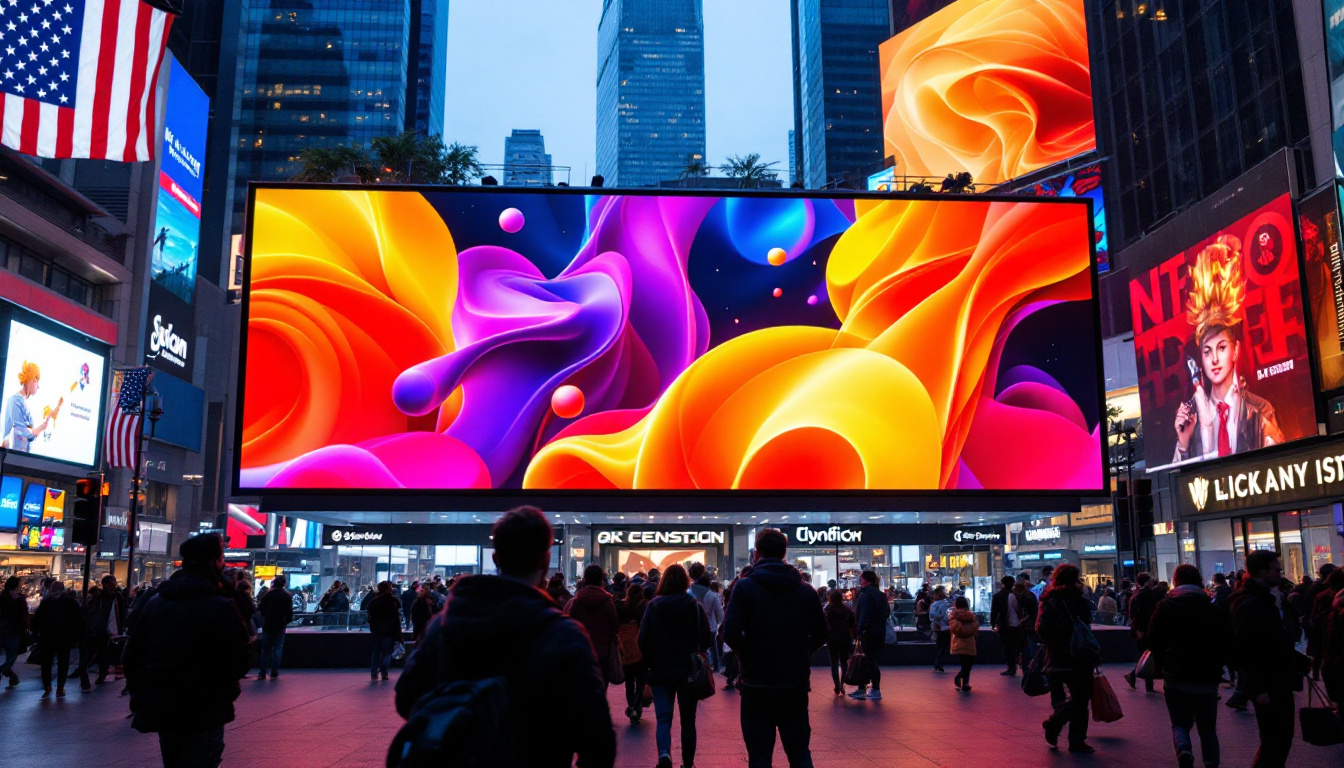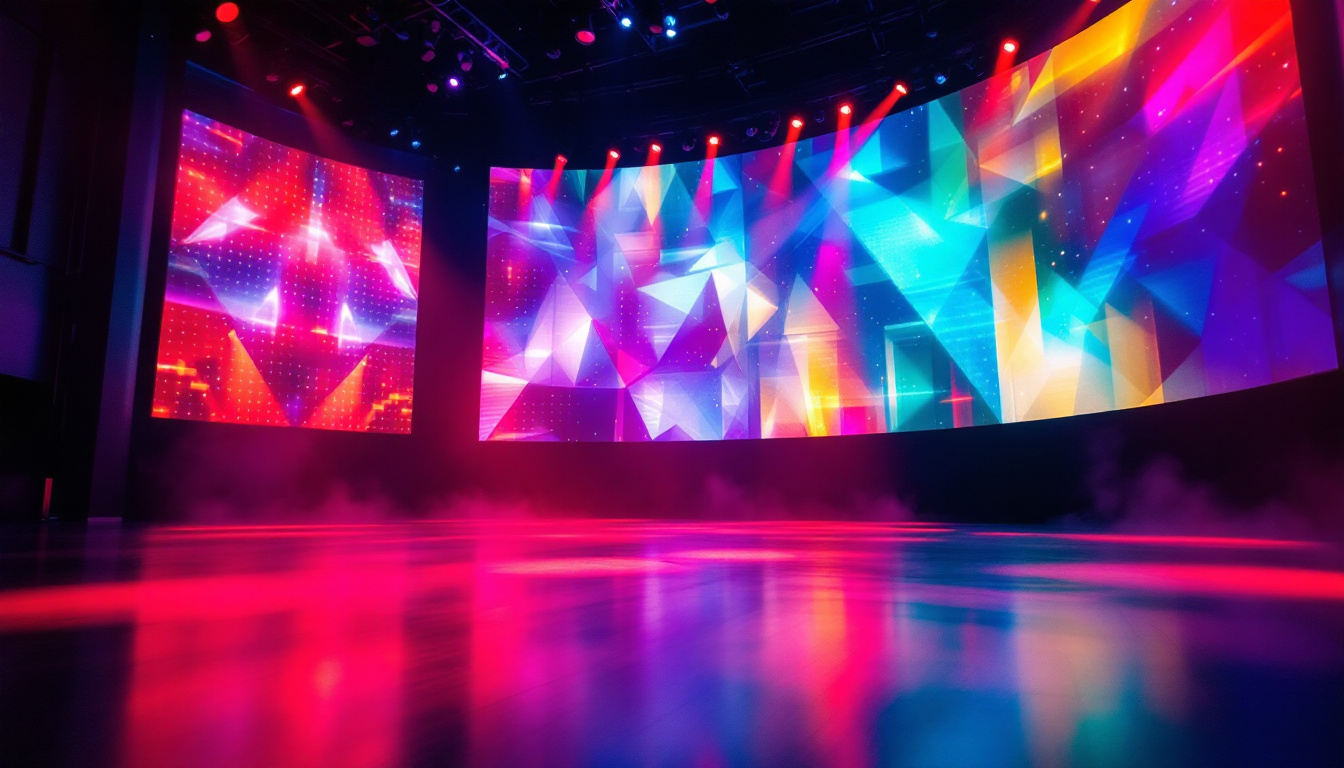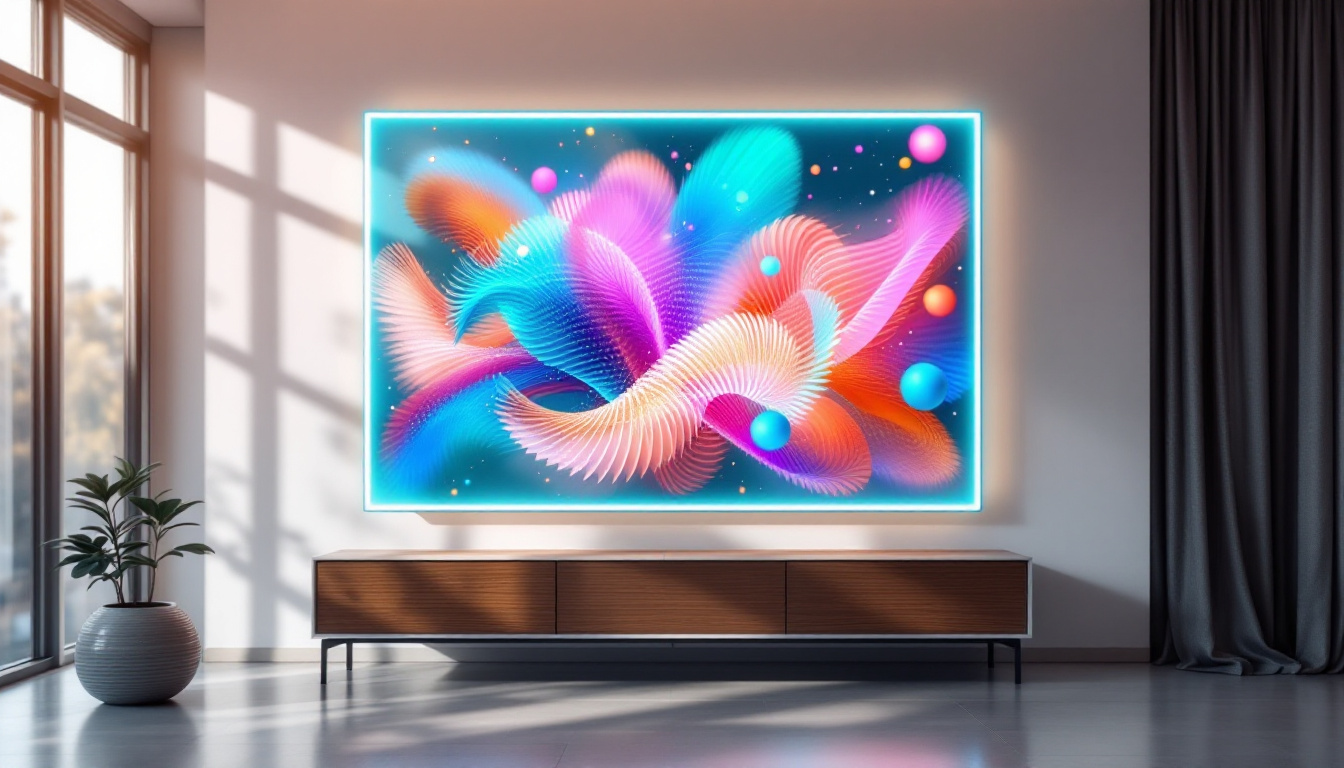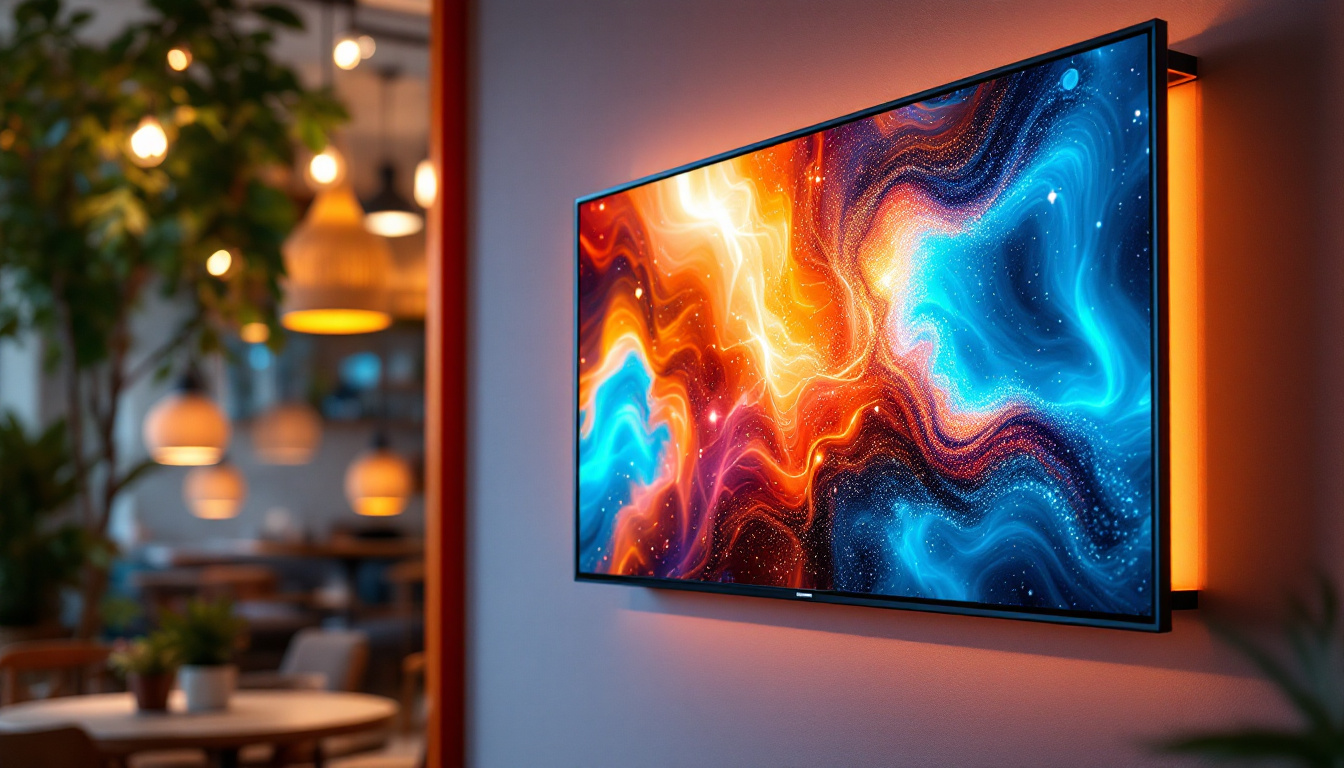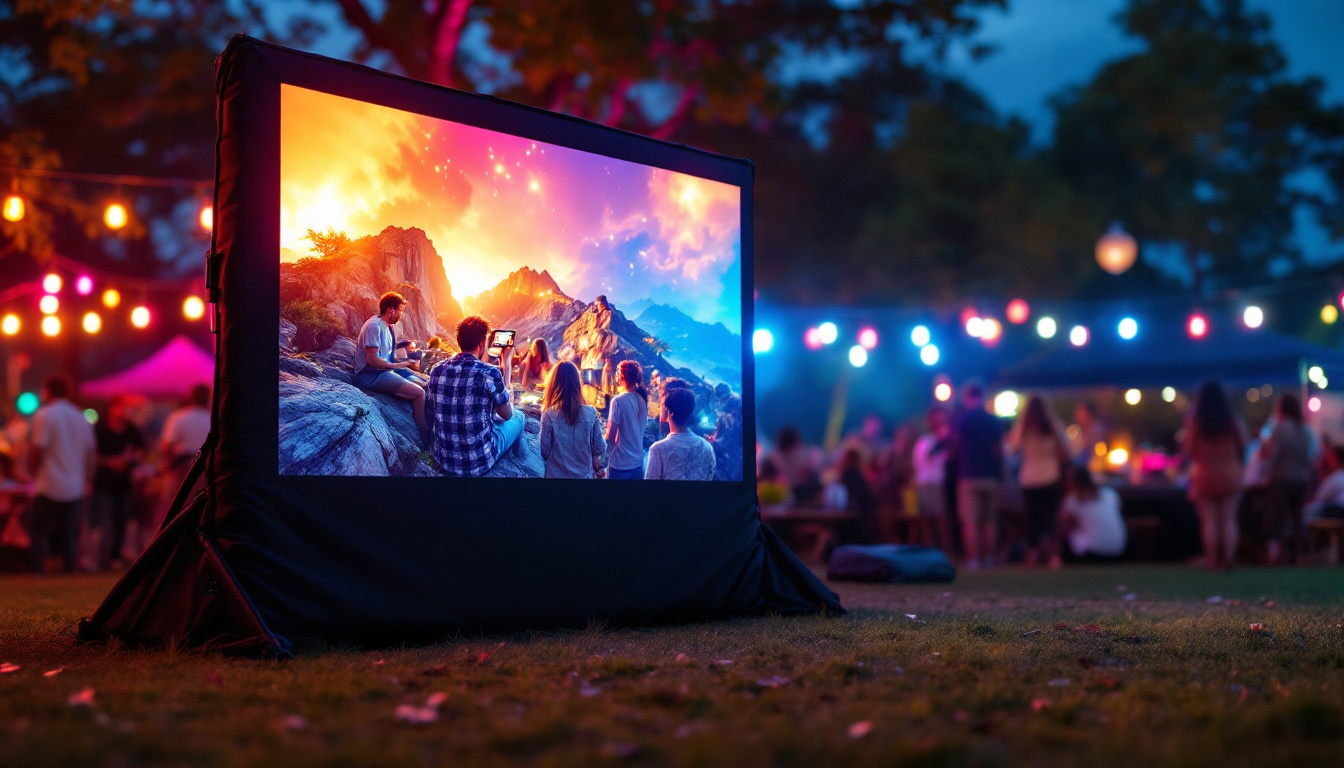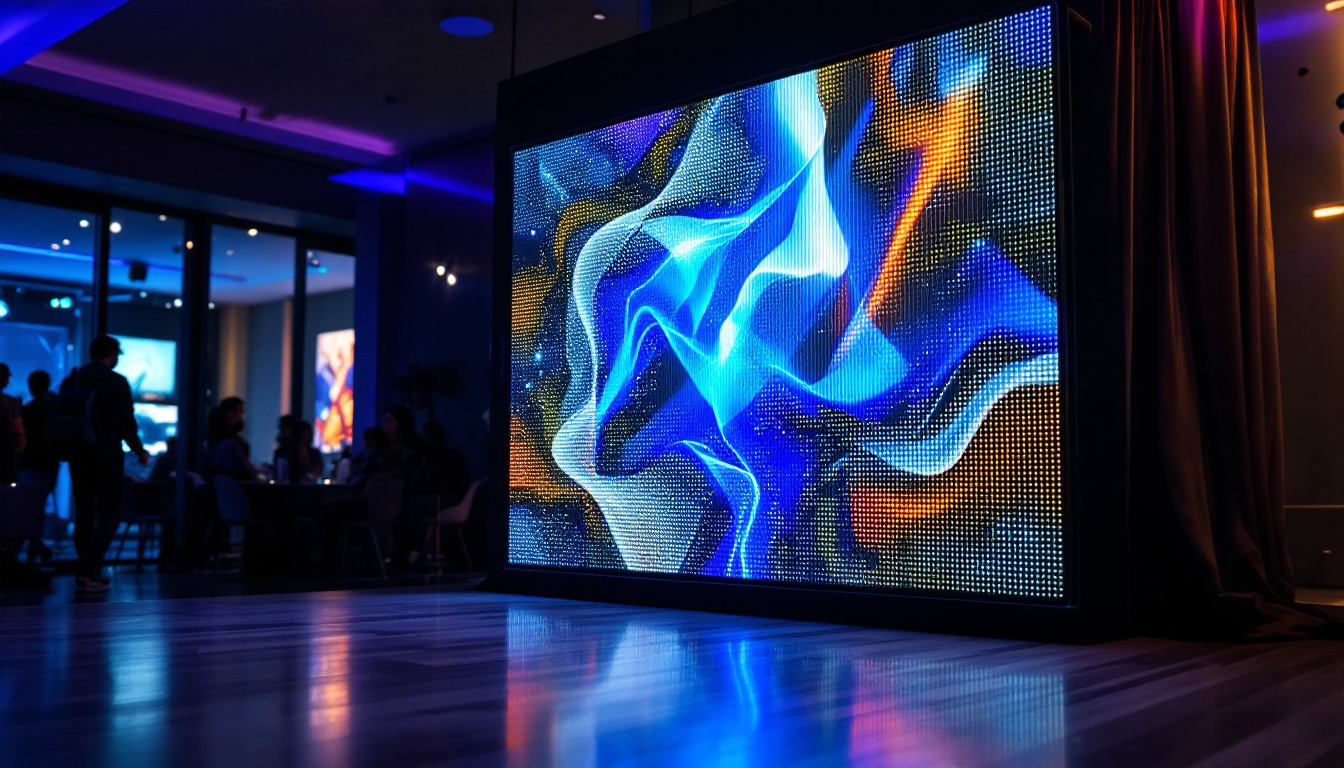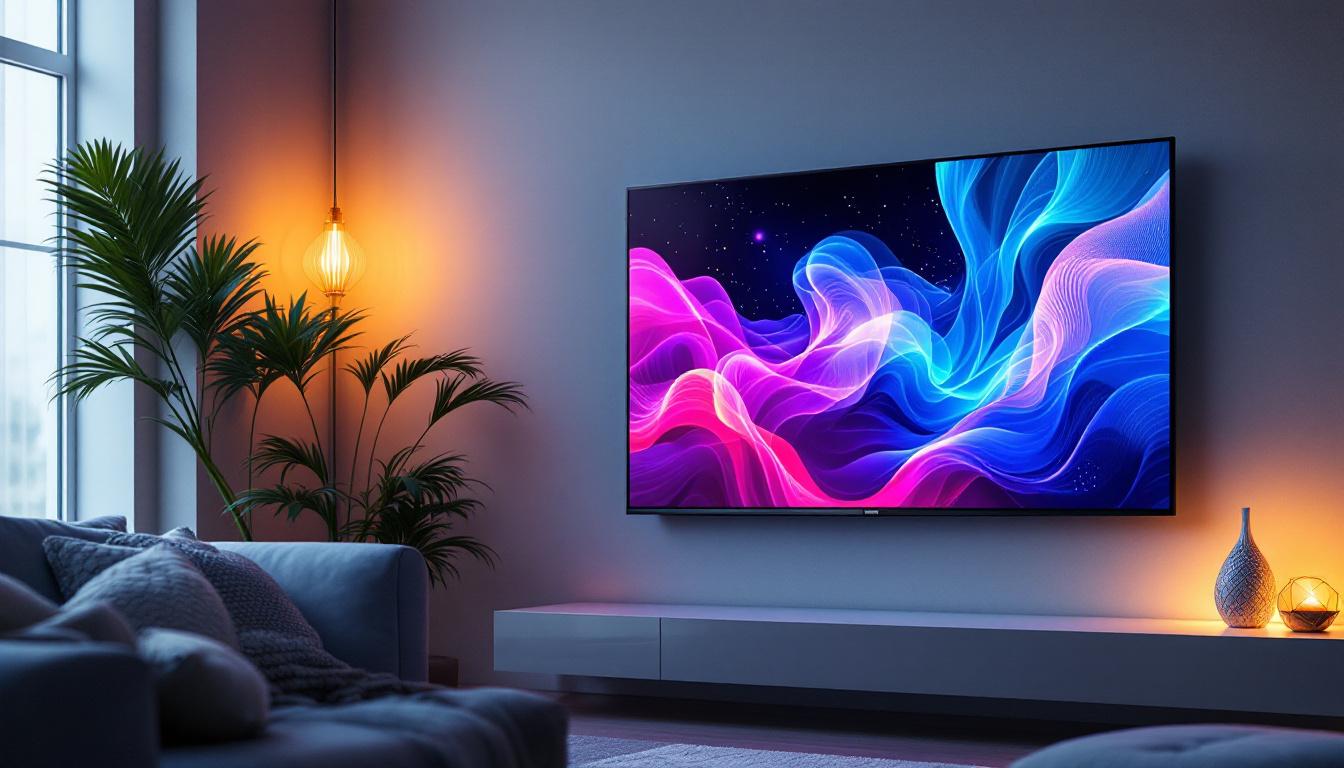In the modern digital age, the choice of a desktop monitor can significantly impact productivity, entertainment, and overall user experience. Among the various options available, a 42-inch LED display stands out as a compelling choice for both professionals and casual users. This article delves into the features, benefits, and considerations of using a 42-inch LED monitor, helping you make an informed decision.
Understanding LED Technology
LED, or Light Emitting Diode, technology has revolutionized the way displays are made and used. Unlike traditional LCD monitors that rely on fluorescent backlighting, LED monitors use an array of tiny diodes to produce light, resulting in brighter images and deeper blacks. This advancement not only enhances the visual experience but also opens up new possibilities for design and functionality in various applications, from consumer electronics to large-scale advertising displays.
How LED Works
LED monitors utilize a matrix of diodes that emit light when an electric current passes through them. This technology allows for more precise control over brightness and color, leading to enhanced image quality. The diodes can be arranged in two primary configurations: edge-lit and backlit. Edge-lit displays have LEDs positioned along the edges of the screen, while backlit displays have them placed directly behind the screen, providing more uniform lighting. Furthermore, advancements in LED technology have led to the development of OLED (Organic Light Emitting Diode) displays, which offer even greater flexibility and color richness by allowing each pixel to emit its own light, eliminating the need for a backlight entirely.
Benefits of LED Displays
One of the standout features of LED technology is its energy efficiency. LED monitors consume significantly less power compared to their LCD counterparts, making them an environmentally friendly choice. Additionally, LED displays tend to have a longer lifespan, reducing the need for frequent replacements. This durability is particularly advantageous in commercial settings where displays are in constant use, such as in retail environments or public information systems.
Another advantage is the superior color accuracy and contrast ratios that LED monitors offer. This is particularly beneficial for graphic designers, photographers, and video editors who require precise color representation in their work. The enhanced viewing angles also mean that images remain clear and vibrant, even when viewed from off-angles. Moreover, the rapid response time of LED technology minimizes motion blur, making it ideal for fast-paced video content and gaming, where every frame counts. As a result, LED displays are becoming increasingly popular not just in home entertainment systems but also in professional settings where performance and clarity are paramount.
The Advantages of a 42-Inch Monitor
A 42-inch desktop monitor provides an expansive viewing area, making it ideal for multitasking and immersive experiences. The larger screen size allows users to have multiple windows open simultaneously without feeling cramped, which can significantly enhance productivity.
Enhanced Productivity
For professionals who rely on various applications, a larger screen can be a game-changer. Imagine having a spreadsheet open on one side while simultaneously reviewing a report on the other. This level of multitasking can streamline workflows, reduce the time spent switching between applications, and ultimately lead to better efficiency.
Moreover, a 42-inch monitor can reduce eye strain. By allowing users to view larger text and images, it minimizes the need for squinting or leaning closer to the screen, which can be particularly beneficial during long hours of work. This ergonomic advantage can lead to a more comfortable working environment, encouraging longer periods of focus and creativity without the discomfort that often accompanies smaller screens.
Additionally, many 42-inch monitors come with adjustable stands or VESA mount compatibility, allowing users to customize their viewing angles. Such flexibility can further enhance comfort and productivity, as users can position their monitors at eye level, reducing neck strain and promoting better posture during extended use.
Immersive Entertainment Experience
Beyond productivity, a 42-inch LED monitor offers an immersive experience for gaming and media consumption. The larger display size enhances the visual experience, making movies and video games more engaging. High-definition content truly comes to life on a screen of this size, with vibrant colors and sharp details that can captivate any audience.
Additionally, many modern 42-inch monitors come equipped with features like high refresh rates and low response times, which are essential for gamers seeking smooth gameplay. The combination of size and technology creates an unparalleled viewing experience that smaller monitors simply cannot match. Furthermore, the expansive screen real estate allows for a more cinematic experience when watching films, making it feel as though you are part of the action rather than just an observer.
Moreover, with the rise of streaming services and 4K content, a 42-inch monitor can serve as a central hub for home entertainment. Users can easily connect their gaming consoles, Blu-ray players, or streaming devices via HDMI ports, transforming their living space into a mini-theater. The added benefit of built-in speakers or the ability to connect to surround sound systems can elevate the audio experience, providing a comprehensive sensory experience that enhances both gaming and movie nights.
Key Features to Look For
When considering a 42-inch LED monitor, several key features should be taken into account to ensure that it meets your specific needs. Understanding these features can help in making an informed purchase decision.
Resolution
Resolution is one of the most critical factors to consider. A higher resolution means more pixels, which translates to sharper images. For a 42-inch monitor, a resolution of at least 1080p (Full HD) is recommended, but 4K (Ultra HD) is becoming increasingly popular for its stunning clarity and detail.
4K monitors provide four times the resolution of 1080p, making them ideal for tasks that require high precision, such as video editing and graphic design. However, it’s essential to ensure that your computer’s hardware can support higher resolutions to fully utilize the capabilities of a 4K monitor.
Refresh Rate and Response Time
The refresh rate, measured in hertz (Hz), indicates how many times the monitor refreshes the image per second. A higher refresh rate results in smoother motion, which is particularly important for gaming and fast-paced video content. A refresh rate of 60Hz is standard, but many gaming monitors offer 120Hz or even 144Hz for an enhanced experience.
Response time, measured in milliseconds (ms), refers to how quickly a pixel can change from one color to another. A lower response time reduces motion blur and ghosting effects, making it crucial for gamers and those who watch action-packed content. Look for monitors with a response time of 5ms or lower for optimal performance.
Connectivity Options
Connectivity is another essential consideration when choosing a monitor. A 42-inch LED display should offer a variety of ports to accommodate different devices. Common connectivity options include HDMI, DisplayPort, and USB-C. Having multiple HDMI ports can be particularly useful for connecting gaming consoles, streaming devices, and computers simultaneously.
Additionally, some monitors come with built-in speakers, which can be a convenient feature for those who prefer a streamlined setup without the need for external audio equipment. However, for audiophiles or serious gamers, investing in high-quality external speakers may be the better choice.
Considerations for Placement and Setup
Once the decision to purchase a 42-inch monitor is made, the next step is to consider its placement and setup. The larger size of the monitor necessitates a thoughtful approach to ensure optimal viewing comfort and aesthetics.
Desk Space and Ergonomics
Before purchasing a 42-inch monitor, it’s crucial to evaluate the available desk space. A larger monitor requires a more extensive surface area, and it’s essential to ensure that the desk can accommodate the monitor’s size without feeling overcrowded. Additionally, consider the height at which the monitor will be placed. Ideally, the top of the screen should be at or slightly below eye level to promote good posture and reduce neck strain.
Using an adjustable monitor stand or mount can also enhance ergonomics, allowing users to customize the height and angle of the display. This flexibility can lead to a more comfortable viewing experience, especially during extended use.
Ambient Lighting
Ambient lighting plays a significant role in the overall viewing experience. A well-lit room can enhance visibility and reduce glare on the screen. However, too much light can lead to reflections that distract from the content being viewed. Consider using curtains or blinds to control natural light and position the monitor away from direct light sources.
For those who work in darker environments, monitors with built-in blue light filters can help reduce eye strain and fatigue. Many modern displays offer settings that adjust color temperatures based on the time of day, providing a more comfortable viewing experience.
Price Range and Value
The price of a 42-inch LED monitor can vary significantly based on features, brand, and specifications. While it’s possible to find budget options, investing in a higher-quality monitor can yield better performance and longevity.
Budget Options
For those on a tight budget, there are several affordable 42-inch LED monitors available. These options typically offer basic features such as Full HD resolution and standard refresh rates. While they may lack some advanced capabilities, they can still provide a satisfactory viewing experience for general use, such as browsing the web or watching videos.
Premium Choices
On the other end of the spectrum, premium models often come equipped with advanced features such as 4K resolution, high refresh rates, and extensive connectivity options. These monitors are designed for professionals and enthusiasts who demand the best performance for tasks such as graphic design, video editing, or competitive gaming.
Investing in a premium monitor can be worthwhile in the long run, as it often comes with better build quality, warranty options, and customer support. Additionally, the enhanced performance can lead to increased productivity and a more enjoyable user experience.
Conclusion
A 42-inch LED monitor can be an excellent addition to any workspace or entertainment setup. With its large display, superior image quality, and versatility, it caters to a wide range of users, from professionals to casual gamers. By understanding the features, advantages, and considerations involved, individuals can make an informed decision that best suits their needs.
As technology continues to evolve, the benefits of LED displays will only become more pronounced. Whether it’s for work, gaming, or media consumption, a 42-inch monitor offers a compelling blend of performance and value that can enhance the overall digital experience.
Discover LumenMatrix’s Advanced LED Display Solutions
Ready to elevate your digital experience with a 42-inch LED monitor that embodies innovation and quality? Look no further than LumenMatrix, a pioneer in LED display technology. Our comprehensive range of products, from Indoor and Outdoor LED Wall Displays to specialized solutions like Vehicle LED Displays and LED Sports Displays, is designed to meet your every need. Whether for professional workspaces, dynamic gaming setups, or captivating home entertainment, LumenMatrix’s LED solutions offer unmatched visual excellence. Check out LumenMatrix LED Display Solutions today and transform your visual communication with clarity and impact.

